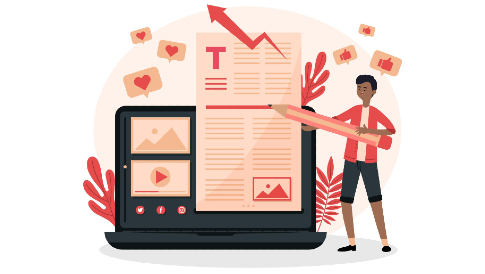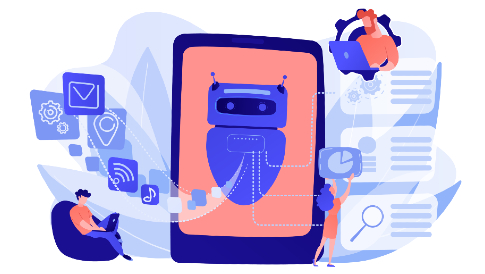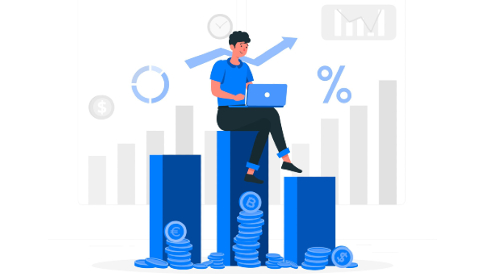5 Key Steps to Successfully Modernize Your Legacy Applications
Let’s dive into modernizing legacy applications – an undertaking as necessary as daunting. In the rapidly evolving digital technology landscape, these relics of a bygone era are akin to antique pocket watches – intricate, reliable, yet undeniably outpaced by modern timekeeping devices. But, much like a venerable timepiece that can be restored and repurposed into a piece of timeless art, these applications, too, can be revitalized with a fresh dose of contemporary technological magic. In this article, we’ll show you the steps to modernize legacy applications and help you realize the potential your apps can have.
Why Modernize Legacylications?
Legacy app modernization can often seem like a Herculean task. However, it’s a venture that promises rewarding yields, akin to finding an oyster’s pearl after hours of scouring the seabed. The process breathes new life into outdated systems, making them relevant, efficient, and adaptive in today’s dynamic tech realm.
Indeed, while modernizing legacy applications may seem daunting, it is akin to a voyage of discovery with treasures to be unearthed. Not only does it rejuvenate old systems, but it also fosters innovation and growth. It’s like providing a compass for your business to navigate the turbulent seas of technological advancements, ensuring your operations stay competitive, resilient, and on the cutting edge. The effort invested in legacy app modernization eventually paves the way for future success and sustainability.
But let’s see in more detail how things can end up.
Improved Efficiency and Cost-effectiveness
Legacy systems, while reliable, often lack the streamlined functionality of contemporary platforms. Their maintenance also frequently involves exorbitant costs, which modernization can substantially reduce. Think of it as trading an old, fuel-guzzling car for a sleek, electric vehicle – the upfront costs might seem significant, but the long-term savings are substantial.
They can be equated to old, fuel-guzzling cars. They get the job done at a high cost and with limited efficiency. Like acquiring a sleek electric vehicle, modernization involves an initial investment but offers considerable long-term savings and superior performance. This process also future-proofs your business, ensuring it is equipped to adapt to evolving technologies, meet emerging customer demands, and stay competitive in a fast-paced, digital-first business landscape.
Competitive Advantage and Innovation
Modernizing also equates to adapting, staying ahead of the curve, and maintaining a competitive edge. Legacy systems can act as anchors, tethering your business to antiquated processes and hampering innovation. By modernizing these applications, you break free from these shackles, enabling your enterprise to innovate and navigate the currents of the contemporary market more efficiently.
As we all know, the saying that time is money rings especially true in the business world. Legacy systems can delay progress like an anchor weighing your business down. Conversely, modernization provides a much better ROI, freeing your enterprise from antiquated practices and unleashing a wave of innovation. This way, your business can keep pace with current market trends and anticipate and proactively respond to future changes, maximizing efficiency and profitability.
Enhanced Security and Compliance
Outdated applications often resemble a house with old locks, vulnerable to modern threats. Modernizing these systems is equivalent to installing cutting-edge security systems, providing bulletproof security according to the 2023 standards. This modernization fortifies the security framework and facilitates adherence to the latest regulatory standards, reducing compliance risks.
The enhanced security protocols and compliance capabilities brought about by modernization act as robust shields, protecting your enterprise from evolving threats and legal complications and ensuring your business’s longevity and reputation.
The next section will check the strategic roadmap for legacy application modernization strategies, providing a clear, step-by-step guide to navigate this intricate labyrinth.
How to Modernize Your Legacy Applications
The legacy application modernization strategies journey passes through a labyrinth of technological intricacies. However, this daunting venture can be navigated systematically with a well-defined roadmap.
Step 1: Assessment
Embarking on the modernization voyage begins with a comprehensive assessment of the current application landscape. It’s like surveying a dense forest before a logging expedition – understanding what needs to be retained, what should be replaced, and what could be re-engineered. This step involves identifying the applications needing modernization and analyzing their architecture, dependencies, and data flow.
Step 2: Define Modernization Goals
Once the assessment phase is complete, the focus shifts to defining the goals of modernization. This involves understanding the expected benefits from the modernization process, like a mariner charting the course of a voyage based on the expected rewards. Goals could range from operational efficiency and cost reduction to improved customer experience and business agility.
Step 3: Prioritize Applications for Modernization
After setting the goals, the next step is to prioritize the applications for modernization. Like a seasoned treasure hunter, businesses must determine which applications will offer the most significant returns after modernization. This could depend on several factors, like the application’s business impact, the complexity of modernization, and the potential for cost savings.
Step 4: Select a Modernization Strategy
The modernization plan is put into action when the apps are given priority. This might involve anything from rehosting the program on a cutting-edge platform to re-engineering it using the newest tools. The chosen strategy should align with the corporate objectives and first assessments of technological viability.
Step 5: Implement the Modernization Plan
Now that a strategy and plan are in place, it’s time to set sail and steer toward the modernization plan’s implementation. This process includes testing the new configuration, upgrading or replacing legacy system components, and ultimately deploying the modernized application. In addition to these steps, businesses should consider leveraging top-ranked inbound marketing software for SaaS to attract, engage, and delight customers, enhancing the overall modernization process.
Final Recap
To sum up, modernizing legacy applications involves navigating the broad waters of digital transformation. A well-charted path and an experienced crew may help this complicated mission reach new heights of operational performance, cost-effectiveness, and commercial innovation. So raise your sails and go off on this adventure because the benefits will be worth it.





Leave a Reply